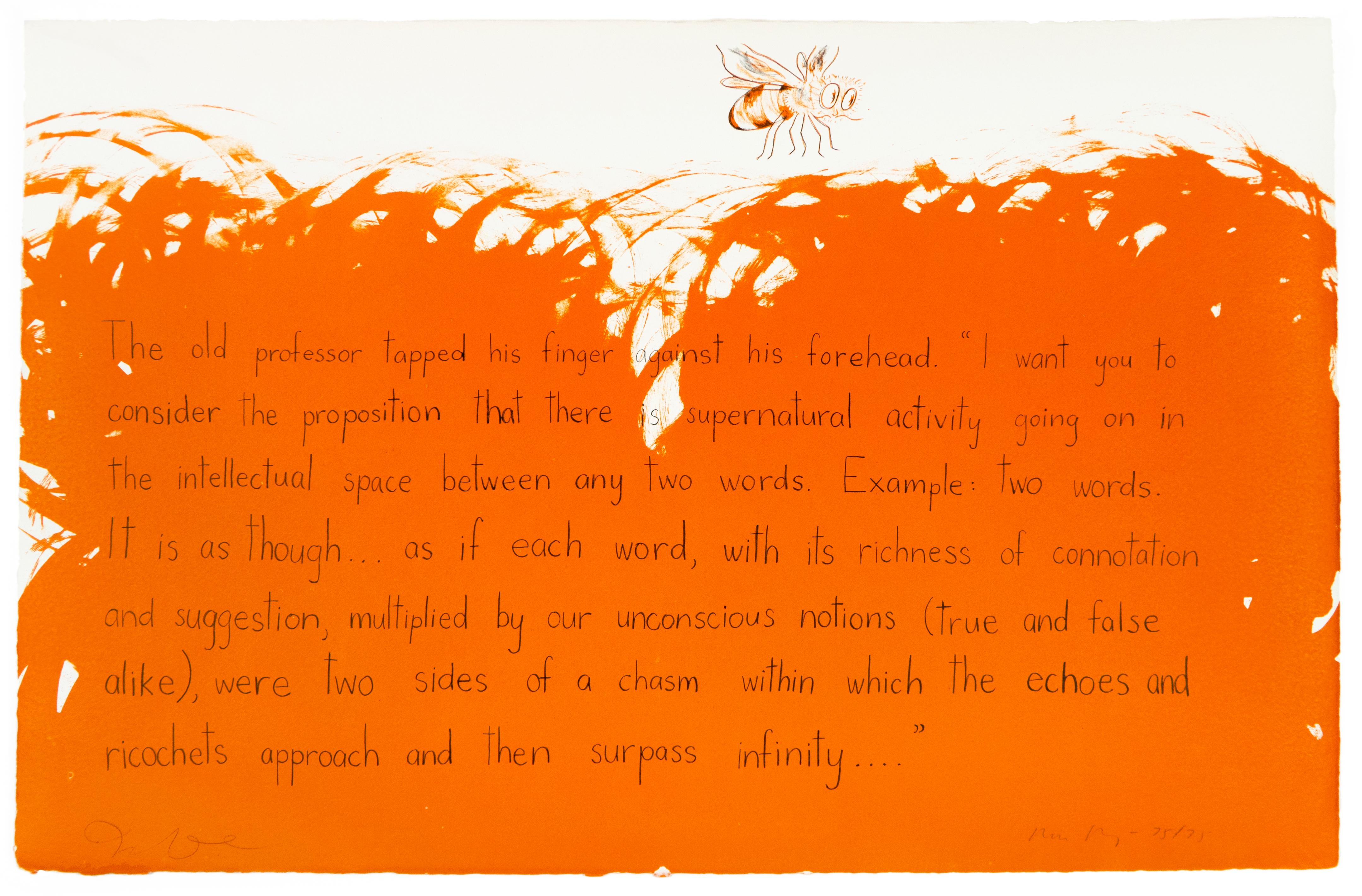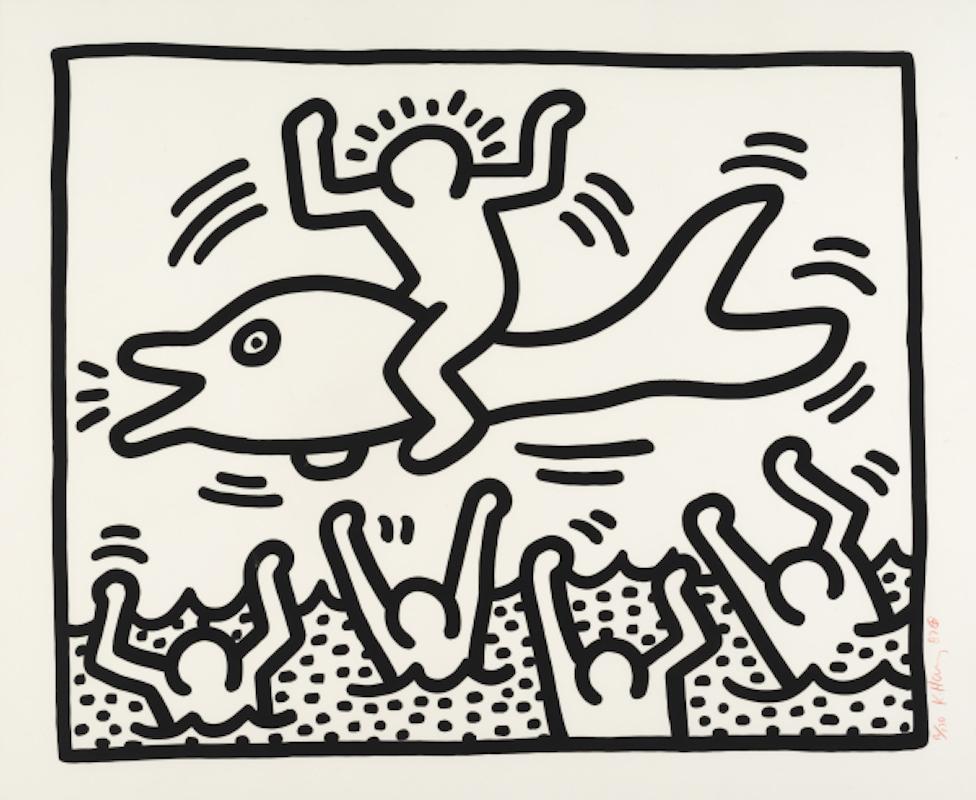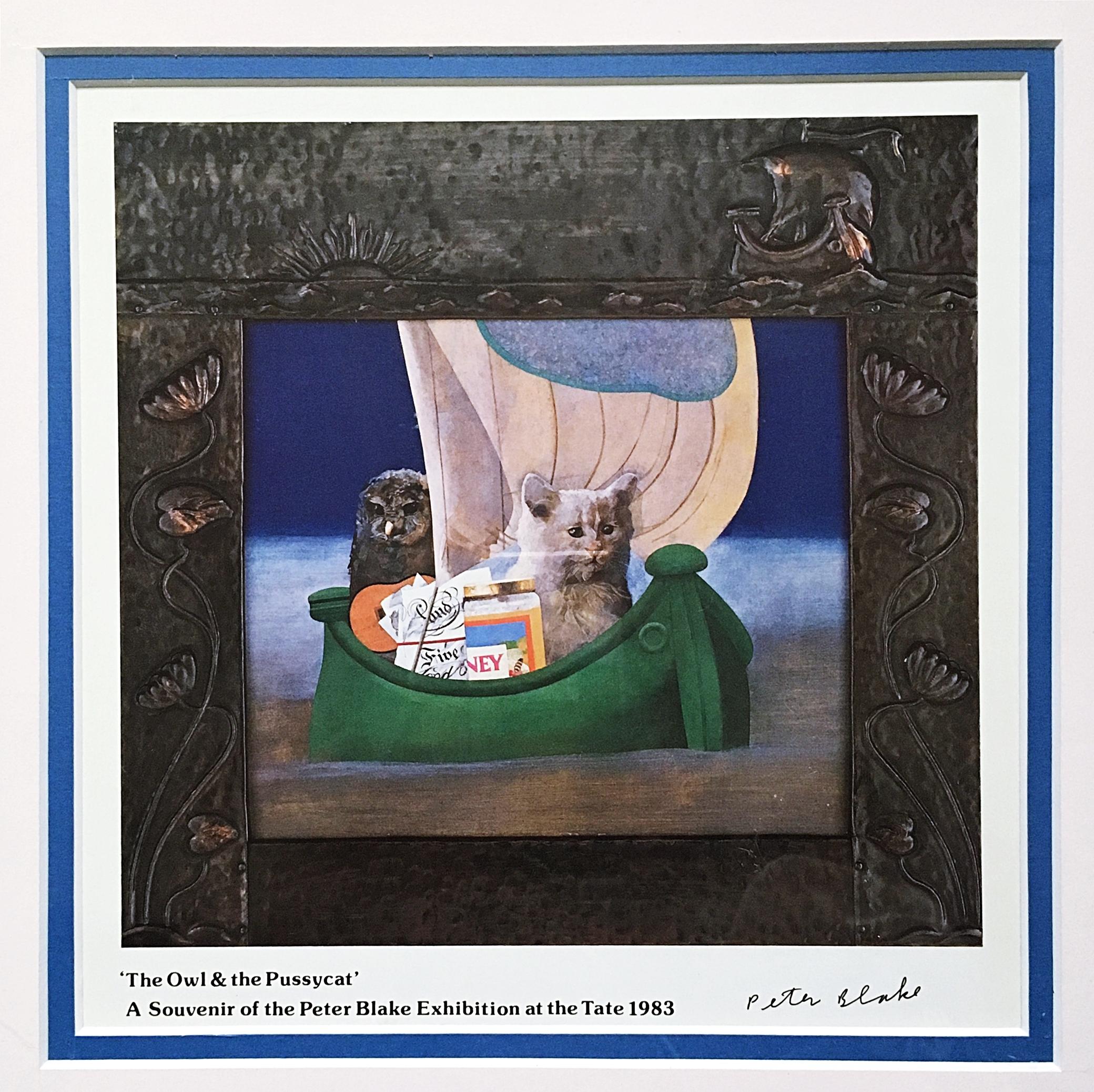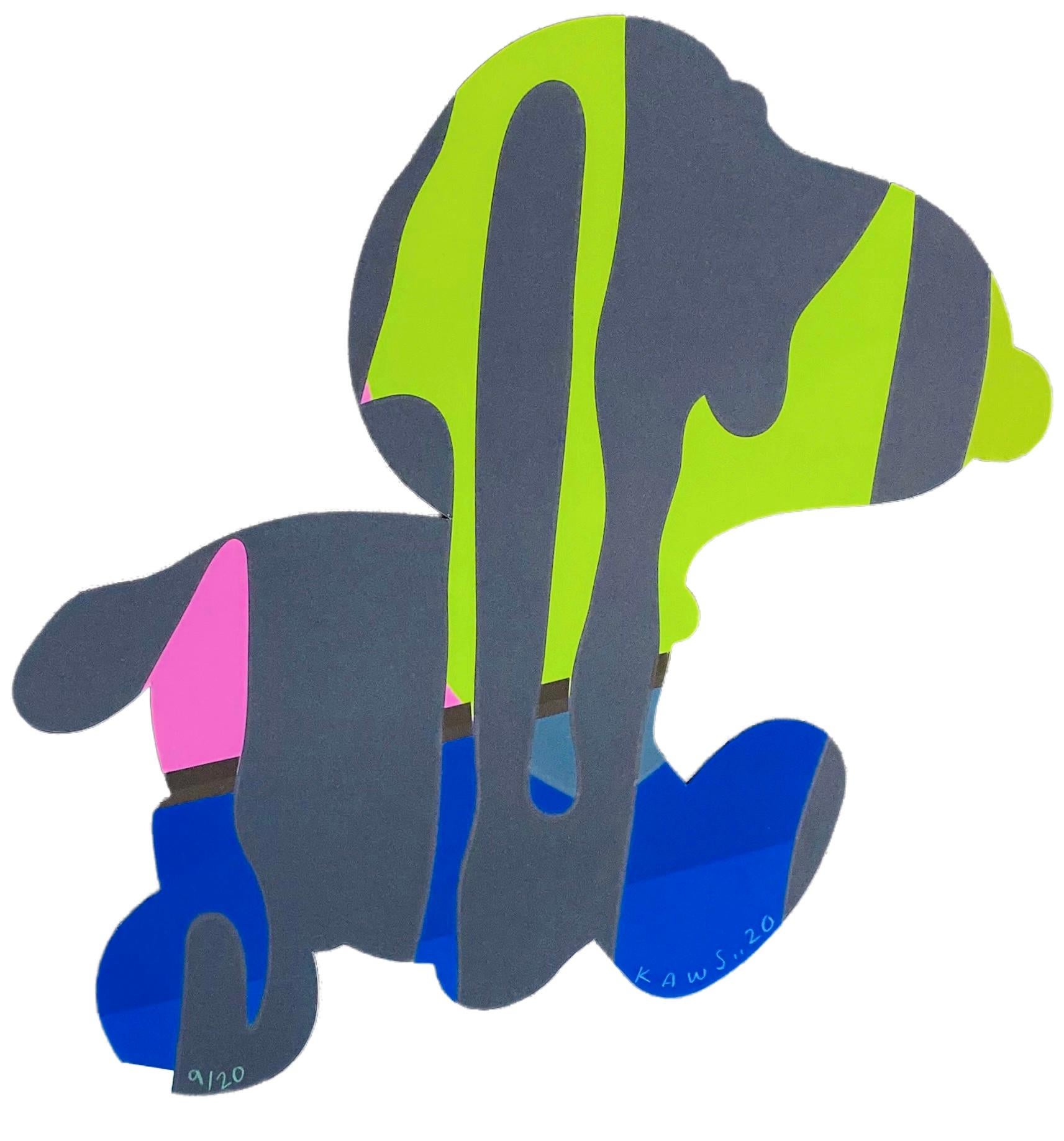Items Similar to Bird's Eye View
Want more images or videos?
Request additional images or videos from the seller
1 of 6
Ronnie CutroneBird's Eye View
About the Item
Ronnie Cutrone (1948-2013)
"Bird's Eye View" c. 1980s
Color Lithograph
Ed. 222/250
Signed, Numbered and Titled
Image Size: 17 x 23.5 inches
Framed Size: approx. 24 x 30 inches.
Ronnie Cutrone, a figurehead of the Pop and Post-Pop art scenes, was Andy Warhol's assistant at the Factory atop the Decker Building from 1972-1980, and worked closely with Roy Lichtenstein, combining stylistic elements of both. Cutrone's large-scale paintings of American cartoon icons, like Mickey Mouse, Felix the Cat, and Woody Woodpecker further reinvented kitsch and popular media in terms of fine art.
Executed in fluorescent monochromatic colors with the finesse of mass-produced silkscreen and prints, Cutrone's works are the reverse of tromp-l'oeil; they use fine art media (watercolor, pastel, crayon - on high-quality paper) to celebrate, rather than hide, the artifice of their subjects. "Everything is cartoon for me", Cutrone is noted for saying, even "ancient manuscripts…[they] are taken very seriously, but they are also cartoons."
Cutrone's works are exhibited and conserved in numerous galleries and museums worldwide, including the Whitney Museum; the MOMA (New York), the Museum of Contemporary Art (Los Angeles) and Museum Boijmans van Beuningen (Rotterdam).
- Creator:Ronnie Cutrone (1948 - 2013, American)
- Dimensions:Height: 24 in (60.96 cm)Width: 30 in (76.2 cm)Depth: 1 in (2.54 cm)
- Medium:
- Movement & Style:
- Period:
- Condition:
- Gallery Location:Missouri, MO
- Reference Number:1stDibs: LU74733551651
About the Seller
5.0
Vetted Seller
These experienced sellers undergo a comprehensive evaluation by our team of in-house experts.
Established in 1970
1stDibs seller since 2017
Typical response time: 21 hours
- ShippingRetrieving quote...Ships From: Missouri, MO
- Return PolicyA return for this item may be initiated within 2 days of delivery.
More From This SellerView All
- Le Christ a l'Horloge, ParisBy Marc ChagallLocated in Missouri, MOMarc Chagall "Le Christ a l'Horloge, Paris" (Christ in the Clock) 1957 (M. 196) Color Lithograph on Arches Wove Paper Signed in Pencil "Marc Chagall" Lower Right Initialed "H.C." (Hors Commerce) Lower Left, aside from numbered edition of 90 *Floated in Gold Frame with Linen Matting, UV Plexiglass Sheet Size: 18 3/4 x 14 3/4 inches (47.5 cm x 38 cm) Image Size: 9 3/4 x 8 1/2 inches Framed Size: 28.5 x 24.25 inches Marc Chagall was a man of keen intelligence, a shrewd observer of the contemporary scene, with a great sympathy for human suffering. He was born on July 7, 1887 in Vitebsk, Russia; his original name was Moishe Shagal (Segal), but when he became a foremost member of the Ecole de Paris, he adopted French citizenship and the French spelling of his name. Vitebsk was a good-sized Russian town of over 60,000, not a shtetl. His father supported a wife and eight children as a worker in a herring-pickling plant. Sheltered by the Jewish commandment against graven images, the young Chagall never saw so much as a drawing until, one day, he watched a schoolmate copying a magazine illustration. He was ridiculed for his astonishment, but he began copying and improvising from magazines. Both Chagall's parents reluctantly agreed to let him study with Yehuda Pen, a Jewish artist in Vitebsk. Later, in 1906, they allowed their son to study in St. Petersburg, where he was exposed to Russian Iconography and folk art. At that time, Jews could leave the Pale only for business and employment and were required to carry a permit. Chagall, who was in St. Petersburg without a permit, was imprisoned briefly. His first wife, Bella Rosenfeld, was a product of a rich cultivated and intellectual group of Jews in Vitebsk. Chagall was made commissar for the arts for the area, charged with directing its cultural life and establishing an art school. Russian folklore, peasant life and landscapes persisted in his work all his life. In 1910 a rich patron, a lawyer named Vinaver, staked him to a crucial trip to Paris, where young artists were revolutionizing art. He also sent him a handsome allowance of 125 francs (in those days about $24) each month. Chagall rejected cubism, fauvism and futurism, but remained in Paris. He found a studio near Montparnasse in a famous twelve-sided wooden structure divided into wedge-shaped rooms. Chaim Soutine, a fellow Russian Jew, and Modigliani lived on the same floor. To Chagall's astonishment, he found himself heralded as one of the fathers of surrealism. In 1923, a delegation of Max Ernst, Paul Eluard and Gala (later Salvador Dali's wife) actually knelt before Chagall, begging him to join their ranks. He refused. To understand Chagall's work, it is necessary to know that he was born a Hasidic Jew, heir to mysticism and a world of the spirit, steeped in Jewish lore and reared in the Yiddish language. The Hasidim had a special feeling for animals, which they tried not to overburden. In the mysterious world of Kabbala and fantastic ancient legends of Chagall's youth, the imaginary was as important as the real. His extraordinary use of color also grew out of his dream world; he did not use color realistically, but for emotional effect and to serve the needs of his design. Most of his favorite themes, though superficially light and trivial, mask dark and somber thoughts. The circus he views as a mirror of life; the crucifixion as a tragic theme, used as a parallel to the historic Jewish condition, but he is perhaps best known for the rapturous lovers he painted all his life. His love of music is a theme that runs through his paintings. After a brief period in Berlin, Chagall, Bella and their young daughter, Ida, moved to Paris and in 1937 they assumed French citizenship. When France fell, Chagall accepted an invitation from the Museum of Modern Art to immigrate to the United States. He was arrested and imprisoned in Marseilles for a short time, but was still able to immigrate with his family. The Nazi onslaught caught Chagall in Vichy, France, preoccupied with his work. He was loath to leave; his friend Varian Fry rescued him from a police roundup of Jews in Marseille, and packed him, his family and 3500 lbs. of his art works on board a transatlantic ship. The day before he arrived in New York City, June 23, 1941, the Nazis attacked Russia. The United States provided a wartime haven and a climate of liberty for Chagall. In America he spent the war years designing large backdrops for the Ballet. Bella died suddenly in the United States of a viral infection in September 1944 while summering in upstate New York. He rushed her to a hospital in the Adirondacks, where, hampered by his fragmentary English, they were turned away with the excuse that the hour was too late. The next day she died. He waited for three years after the war before returning to France. With him went a slender married English girl, Virginia Haggard MacNeil; Chagall fell in love with her and they had a son, David. After seven years she ran off with an indigent photographer. It was an immense blow to Chagall's ego, but soon after, he met Valentine Brodsky, a Russian divorcee designing millinery in London (he called her Fava). She cared for him during the days of his immense fame and glory. They returned to France, to a home and studio in rustic Vence. Chagall loved the country and every day walked through the orchards, terraces, etc. before he went to work. Chagall died on March 28, 1985 in the south of France. His heirs negotiated an arrangement with the French state allowing them to pay most of their inheritance taxes in works of art. The heirs owed about $30 million to the French government; roughly $23 million of that amount was deemed payable in artworks. Chagall's daughter, Ida and his widow approved the arrangement. Written and submitted by Jean Ershler Schatz, artist and researcher from Laguna Woods, California. Sources: Hannah Grad Goodman in Homage to Chagall in Hadassah Magazine, June 1985 Jack Kroll in Newsweek, April 8, 1985 Andrea Jolles in National Jewish Monthly Magazine, May 1985 Michael Gibson...Category
1950s Modern Figurative Prints
MaterialsLithograph
- Bareback Act, Old HippodromeBy Gifford BealLocated in Missouri, MOBareback Act, Old Hippodrome By Gifford Beal (1879-1956) Signed Lower Right Unframed: 6.5" x 9.5" Framed: 17.5" x 20" Gifford Beal, painter, etcher, muralist, and teacher, was born in New York City in 1879. The son of landscape painter William Reynolds Beal, Gifford Beal began studying at William Merritt Chase's Shinnecock School of Art (the first established school of plein air painting in America) at the age of thirteen, when he accompanied his older brother, Reynolds, to summer classes. He remained a pupil of Chase's for ten years also studying with him in New York City at the artist's private studio in the Tenth Street Studio Building. Later at his father's behest, he attended Princeton University from 1896 to 1900 while still continuing his lessons with Chase. Upon graduation from Princeton he took classes at the Art Students' League, studying with impressionist landscape painter Henry Ward Ranger and Boston academic painter Frank Vincent DuMond. He ended up as President of the Art Students League for fourteen years, "a distinction unsurpassed by any other artist." His student days were spent entirely in this country. "Given the opportunity to visit Paris en route to England in 1908, he chose to avoid it" he stated, "I didn't trust myself with the delightful life in ParisIt all sounded so fascinating and easy and loose." His subjects were predominately American, and it has been said stylistically "his art is completely American." Gifford achieved early recognition in the New York Art World. He became an associate member of the National Academy of Design in 1908 and was elected to full status of academician in 1914. He was known for garden parties, circuses, landscapes, streets, coasts, flowers and marines. This diversity in subject matter created "no typical or characteristic style to his work." Beal's style was highly influenced by Chase and Childe Hassam, a long time friend of the Beal family who used to travel "about the countryside with Beal in a car sketching...Category
20th Century American Modern Animal Prints
MaterialsLithograph
- Hurry SundownBy Billy SchenckLocated in Missouri, MOBilly Schenck (American, b. 1947) Hurry Sundown, 1985 Edition 19/60 Serigraph 21 x 38 inches Signed, Titled, Dated, and Numbered Lower Margin Billy Schenck is a contemporary artist ...Category
1980s Pop Art Landscape Prints
MaterialsScreen
- Blue Profile with Pink OrbBy Peter MaxLocated in Missouri, MOColor Lithograph Signed and Dated Lower Right Numbered Lower Left 22/100 Image Size: approx. 23 x 29 inches Framed Size: approx. 31 x 37.5 inchesCategory
1970s Pop Art Figurative Prints
MaterialsLithograph
- Madame ButterflyBy Larry RiversLocated in Missouri, MOLithograph and silkscreen, 1978 23 x 31 inches (image and sheet) 28 x 36 framed Signed, dated and numbered ed. 300 lower left Printed by Styria Studios Figurative* artist Larry Rive...Category
1970s Pop Art Figurative Prints
MaterialsLithograph
- Zero Horizontal (Zero I)By Peter MaxLocated in Missouri, MOPeter Max "Zero Horizontal" (Zero I) 1973 Color Lithograph Ed. 194/300 Signed and Numbered Framed Size: approx. 32 x 25 inches Print Size: approx 20 x 26 inches Peter Max is a multi-dimensional artist focused on contemporary events. When he left art school in the 1960s he began producing, "cosmic imagery . . . that caught on right away, and before you knew it, I got an eight-page cover story in Life magazine." He explores all media, including mass media as a "canvas" for his creative expression. His decorative designs are on a Boeing 777 Continental, Dale Earnhardt's #3 Millennium race car, U.S. postage stamps and 235 U.S. border murals. He created two 155-foot murals for the U.S. Pavilion at the Seville World's Fair in Spain, 12 postage stamps for the Earth Summit in Rio de Janeiro, Brazil, and a 600-foot stage mural for Woodstock 2. He has also painted for five U.S. presidents, as well as the Beatles, Aerosmith and the Rolling Stones. After September 11th, 2001 Peter Max began a project by finishing 356 portraits of the firefighters that were lost in the attack. His portraits were then given to the victims' families. In addition, from a special request from President George W. Bush, he recently created another 356 portraits for a firefighters' memorial. Peter Max has worked with oils, acrylics, water colors, finger paints, dyes, pastels, charcoal, pen, multi-colored pencils, etchings, engravings, animation cells...Category
1970s Pop Art Figurative Prints
MaterialsLithograph
You May Also Like
- How it all Began from the "After Noon" Portfolio, Lithograph by Richard LindnerBy Richard LindnerLocated in Long Island City, NYArtist: Richard Lindner, German/American (1901 - 1978) Title: How it all Began from the "After Noon" Portfolio Year: 1969 Medium: Lithograph on Arches, signed and numbered in pencil ...Category
1960s Pop Art Animal Prints
MaterialsLithograph
- The Old Professor (Oo La La) Jim Dine lithograph and Ron Padgett poetryBy Jim DineLocated in New York, NYBright orange leaps up like flames, or swaying grass, over which hovers a large-eyed bee sketched in black and orange. Over the fire-red in neat handwriting Ron Padgett...Category
1970s Pop Art Figurative Prints
MaterialsLithograph
- UntitledBy Keith HaringLocated in New York, NYCreated by Keith Haring as an original lithograph, Untitled, 1987 is hand-signed, dated and numbered, measuring 29 ½ x 35 3/8 in (75 x 90 cm), unframed. From the edition of 170, it ...Category
20th Century Pop Art Animal Prints
MaterialsLithograph
- The Owl and the PussycatBy Peter BlakeLocated in New York, NYPeter Blake The Owl and the Pussycat, 1983 Offset Lithograph Hand signed by Peter Blake on the lower right front Frame Included This whimsical...Category
1980s Pop Art Animal Prints
MaterialsLithograph, Offset
- KAWS Snoopy print 2020 (KAWS prints)By KAWSLocated in NEW YORK, NYKAWS Snoopy Print 2020: This rare, highly collectible KAWS Snoopy print was released on the occasion of the monumental 2021 KAWS Brooklyn Museum exhibitio...Category
21st Century and Contemporary Pop Art Animal Prints
MaterialsScreen, Lithograph
- So I lean back (Oo La La) Jim Dine lithograph and Ron Padgett poetry pink birdBy Jim DineLocated in New York, NYA sparrow perches at the center of a swath of pale pink, around which wraps hand-written lines from Ron Padgett’s poem “Ode to Clemens Laurrell”: “So I lea...Category
1970s Pop Art Figurative Prints
MaterialsLithograph
Recently Viewed
View AllMore Ways To Browse
Birds Eye
Retro Eye Frames
Vintage Bird Paper
Birds Eye Vintage
Ancient Birds
Orange Bird Vintage
Cat Eye Sign
Large Vintage Bird Prints
Cat Eye Frames
Framed Retro Bird Prints
Kitsch Vintage
Art Like Roy Lichtenstein
Vintage Manuscript
Vintage Manuscripts
Cat And Bird Painting
Large Manuscripts
20th Century Manuscripts
Lichtenstein Silkscreen




